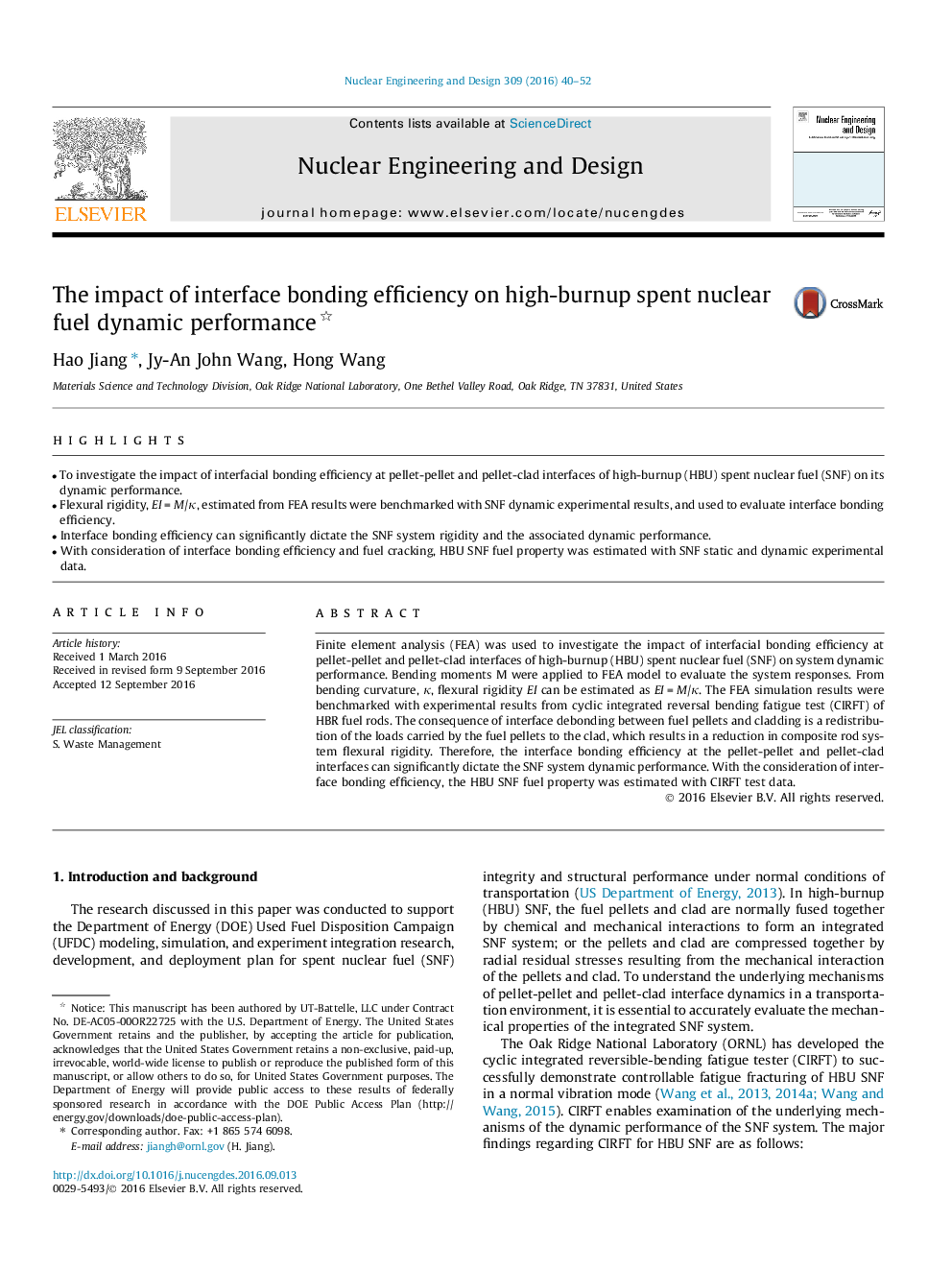| Article ID | Journal | Published Year | Pages | File Type |
|---|---|---|---|---|
| 4925873 | Nuclear Engineering and Design | 2016 | 13 Pages |
Abstract
Finite element analysis (FEA) was used to investigate the impact of interfacial bonding efficiency at pellet-pellet and pellet-clad interfaces of high-burnup (HBU) spent nuclear fuel (SNF) on system dynamic performance. Bending moments M were applied to FEA model to evaluate the system responses. From bending curvature, κ, flexural rigidity EI can be estimated as EI = M/κ. The FEA simulation results were benchmarked with experimental results from cyclic integrated reversal bending fatigue test (CIRFT) of HBR fuel rods. The consequence of interface debonding between fuel pellets and cladding is a redistribution of the loads carried by the fuel pellets to the clad, which results in a reduction in composite rod system flexural rigidity. Therefore, the interface bonding efficiency at the pellet-pellet and pellet-clad interfaces can significantly dictate the SNF system dynamic performance. With the consideration of interface bonding efficiency, the HBU SNF fuel property was estimated with CIRFT test data.
Related Topics
Physical Sciences and Engineering
Energy
Energy Engineering and Power Technology
Authors
Hao Jiang, Jy-An John Wang, Hong Wang,
